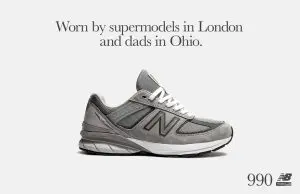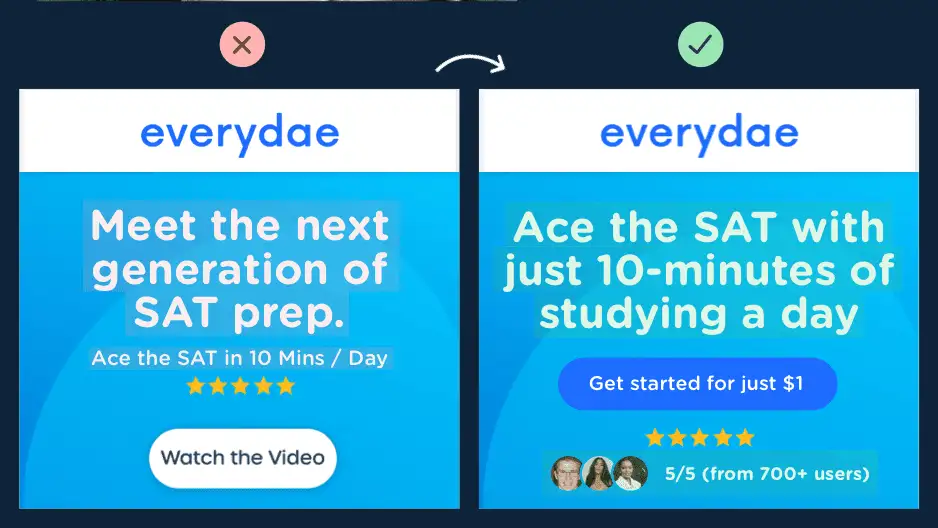One of my favorite content writers, Harry Dry, recently shared a masterclass on copywriting in this epic 76-minute interview. So after you get through this post, web sure to watch it.
Also join his newsletter at MarketingExamples.com
There is plenty to learn and unpack in the video but let me just highlight 3 rules that Harry shared that stood out to me.
Copywriting is often misunderstood and undervalued, yet it remains the number one skill in marketing. Crafting copy that resonates, captivates, and converts is an art form that requires a deep understanding of the audience, a flair for creativity, and a rigorous application of proven principles. Harry Dry, a renowned copywriter, emphasizes three fundamental rules to elevate your copywriting game:
Can I visualize it?
Can I falsify it?
Can nobody else say this?
Let’s delve into these rules and understand how they can transform your copywriting.
Rule 1: Can I Visualize It?
The power of visualization in copywriting cannot be overstated. If your audience can’t visualize what you’re describing, they won’t remember it. Concrete, vivid images stick in people’s minds far better than abstract concepts.
For example, Harry Dry conducted a simple test with six words: seamless transition, charging Pitbull, muscly Irishman, Better Way, leg of lamb. Unsurprisingly, the words people remembered were Pitbull, Irishman, and leg of lamb. These words evoke strong visual images, unlike the abstract “Better Way.”
To make your copy more visual:
- Zoom In on the Details: Instead of saying “better service,” describe what that better service looks like. “Our team responds to queries in under 10 minutes” paints a clearer picture.
- Use Concrete Nouns and Active Verbs: Rather than saying “we improve efficiency,” say “our software speeds up your workflow by automating tasks.”
Rule 2: Can I Falsify It?
Falsifiability means that your statements can be proven true or false. This rule brings authenticity and credibility to your copy. When you make a statement that can be fact-checked, it holds more weight and engages the reader more effectively.
For instance, instead of saying, “Our product is the best on the market,” say, “Our product has been rated the best by 90% of users in a recent survey.” The latter is a specific, verifiable claim.
To incorporate falsifiability:
- Provide Specific Data and Examples: Use numbers, dates, and concrete evidence to back up your claims.
- Avoid Hyperboles and Vague Statements: Over-the-top claims like “world’s best” without evidence can undermine your credibility.
Rule 3: Can Nobody Else Say This?
This rule is about differentiation. Your copy should highlight what makes your product or service unique. If any competitor can say the same thing, you haven’t truly differentiated yourself.
Take New Balance’s ad: “Worn by supermodels in London and dads in Ohio.” This line is unique and specific to New Balance, as it contrasts two very different types of people who wear their shoes.
To ensure uniqueness:
- Highlight Unique Selling Points (USPs): Focus on what sets you apart. It could be a specific feature, a unique process, or a distinctive brand story.
- Avoid Generic Statements: Phrases like “high quality” or “excellent customer service” are overused. Instead, describe what quality and service mean in your context.
Practical Application: The New Balance Example

Let’s see these rules in action with New Balance’s famous line: “Worn by supermodels in London and dads in Ohio.”
- Can I Visualize It?: Yes, you can easily picture a supermodel in a fashion-forward city like London and a dad in a casual setting in Ohio, both wearing New Balance shoes.
- Can I Falsify It?: Yes, it’s a fact that both supermodels and dads wear New Balance, which can be verified.
- Can Nobody Else Say This?: This specific combination of audiences (supermodels and dads) is unique to New Balance, making it a distinctive statement.
Mastering these three rules—visualization, falsifiability, and uniqueness—can significantly enhance your copywriting skills. Whether you’re crafting an ad, a landing page, or an email campaign, applying these principles will help you create compelling, memorable, and effective copy. Remember, great copy is not just about what you say, but how you say it. Follow Harry Dry’s rules, and you’ll be well on your way to writing copy that truly stands out.
More of Harry’s Tips – Speed Round
- A great sentence is a good sentence made shorter.
- Writing great copy begins with having something to say in the first place.
- Copy is like food. How it looks matters.
- Since the look of copy matters so much, don’t write copy in Google Docs. Write it in Figma (so you can write and design at the same time).
- Kaplan’s Law of Words: Any word that isn’t working for you is working against you.
- You know a paragraph is ready to ship when there’s nothing left to remove. It’s like a Jenga tower. The entire thing should collapse if you remove something.
- Make a promise in the title so the reader knows exactly what they’re going to get if they click. Then, deliver on the promise.
- The three laws of copywriting: (1) Make it concrete, (2) make it visual, and (3) make it falsifiable.
- Make it concrete: Don’t be abstract. For an example, say you’re writing about habits. Don’t talk about “productive routines.” That’s abstract. Write about “waking up at 6am to write” instead. It’s concrete — and much more vibrant.
- Make it visual: People see in pictures. This is why instead of memorizing card numbers directly, world memory champions memorize cards by turning them into pictures and then back to cards.
- Make it falsifiable: When you write a sentence that’s true or false, you put your head on the chopping block, which makes people sit up in their seat.
- When has a falsifiable statement resonated? Galileo got sentenced to a decade of house arrest for saying that the earth spins around the sun. That’s a falsifiable sentence. But nobody would’ve done anything if he’d said that the earth has a harmonious connection with a celestial object.
- Write with the delete key. Using fewer words lets you be more impactful with the words you keep.
- The job of a sales page is to make a bold claim at the top. Then spend the rest of the page backing up what you’ve said… with a ridiculous amount of proof.
- If your competitor could’ve written the sentence, cut it.
- Good copy is differentiated. Here’s an example: Elon Musk shouldn’t write “The Cybertruck is the world’s best truck.” Ford or Dodge can write that sentence. But only Elon can write: “The Cybertruck is tougher than an F-150 and faster than a Porsche.“
- Some days, the writing comes easily. Some days, it takes sweat. The reader doesn’t care if you wrote for two minutes, two hours, or two days. The ink looks the same.
- Great copy reads like your customer wrote it. Talk to them.
Great copywriting is one piece of the performance marketing puzzle.
Combine great copy with stunning landing pages, accurate audience targeting, deep analytics analysis, and strategy marketing for a powerful performance marketing program. At Upgrow we study the greats to vastly outperform the status quo. Get a free marketing review and learn more now – book a call.




